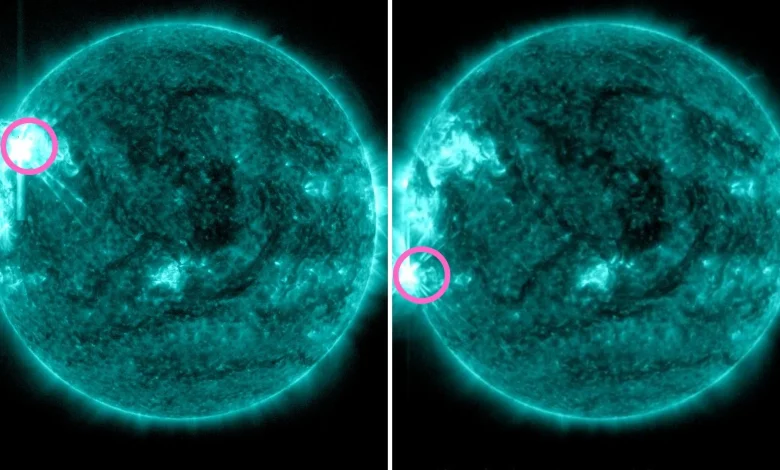Sun unleashes 2 colossal X-class solar flares, knocking out radio signals across the Americas and Pacific

The sun has fired off not one but two colossal X-class solar flares in less than 12 hours, causing radio blackouts across the sunlit portion of Earth at the time of eruption and marking a dramatic uptick in solar activity.
Each of the X-flares was accompanied by a coronal mass ejection. (Image credit: NOAA SWPC / LASCO)
Both eruptions unleashed coronal mass ejections (CMEs) — vast plumes of magnetized plasma — but early modelling shows neither is directed at Earth. However, the outer edges of these CMEs could interact with a fast stream of solar wind later this week, sparking strong (G3) geomagnetic storm conditions around Nov. 6-7, according to NOAA. This possible uptick in activity is good news for aurora chasers, as geomagnetic storms can result in some particularly vibrant and dynamic aurora shows.
You may like
What’s next?
Sunspot AR4274 remains highly magnetically complex and is now turning to face Earth, meaning any future eruptions could be more Earth-directed. NOAA is currently forecasting a 65% chance of additional M-class flares and a 15% chance of X-class flares in the coming days.
But the activity hasn’t stopped there! Just this morning (Nov. 5), the same active region AR4274 produced another strong M7.4-class flare, peaking at 6:15 a.m. EST (1115 GMT).
According to NOAA’s Space Weather Prediction Center, this flare was accompanied by a partial-halo CME that could have an Earth-directed component, particularly given the full-halo shock front detected ahead of the main CME material.
“This CME is currently under analysis to determine any Earth-directed threat and if so, what level of geomagnetic response we might anticipate,” says NOAA.
What is an R3 radio blackout?
On NOAA’s five-level radio blackout scale (R1-R5), an R3 event is classified as strong. It is capable of disrupting high-frequency radio communications and navigation signals for up to an hour on the sunlit side of Earth. These blackouts can often affect aviation and maritime communications.
Image 1 of 2
The X.1.8 solar flare caused radio blackouts across the Americas on Nov. 4. (Image credit: NOAA SWPC)The X.1.1 solar flare caused radio blackouts across the Pacific on Nov. 4.(Image credit: NOAA SWPC)
What are X-class solar flares?
A solar flare is a sudden, intense burst of energy from the sun caused by the sudden release of magnetic energy in an active sunspot region. These outbursts send radiation and charged particles hurling into space and can disrupt communications on Earth if the flare erupts from an Earth-facing sunspot.
X-class solar flares are the most powerful category of flare. The number that follows the X indicates its strength, with each step representing a coupling in power, meaning an X2 flare is twice as strong as an X1.
Editor’s note: This story was updated at 3 p.m. EST (1900 GMT) on Nov. 5 with NOAA’s latest geomagnetic storm forecast.





